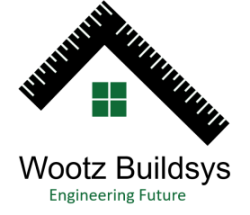
India’s industrial landscape is evolving at an incredible pace. From large-scale manufacturing plants to logistics hubs, the need for faster, cost-effective, and sustainable factory construction has never been greater. Traditional brick-and-mortar methods, while familiar, often struggle to keep up with the growing demands of modern industries — especially in terms of speed, flexibility, and efficiency.
This is where PEB construction for factories is making a major impact. Pre-Engineered Buildings (PEBs) are revolutionizing the way factories are designed, built, and operated. Offering superior quality, reduced construction time, and sustainable features, PEBs have become the backbone of industrial growth in India.
Let’s explore why PEB construction has become the preferred choice for modern factories and how it’s transforming industrial development across the nation.
What Is PEB Construction?
PEB (Pre-Engineered Building) construction is a modern method where structural components like columns, beams, and trusses are designed, fabricated, and pre-assembled in a factory before being transported to the project site for quick installation.
Unlike conventional construction, which involves on-site fabrication and longer timelines, PEB construction ensures precision, quality control, and speed. The entire process follows a “design–fabricate–install” approach, minimizing errors and maximizing efficiency.
In simple terms, PEB construction for factories allows industries to start operations faster, expand easily, and maintain long-term structural durability — all while saving costs.
Why Modern Factories Prefer PEB Construction
1. Speed and Efficiency
Time is money in today’s manufacturing world. Traditional construction can take months or even years to complete, causing delays in production and business operations.
With PEB construction, factory buildings can be completed up to 50–60% faster than conventional methods. Since the components are fabricated in a controlled environment and simply assembled on-site, weather delays and labor issues are significantly reduced.
This speed allows manufacturers to start production sooner — giving them a competitive edge in the market.
2. Cost-Effectiveness Without Compromising Quality
While many assume modern technology equals higher costs, PEB construction proves the opposite. Because most of the work happens off-site, the need for on-site labor, equipment, and raw material wastage is drastically reduced.
In addition, the lightweight steel structures used in PEBs reduce foundation costs. The precise engineering also minimizes errors, saving money on rework. Over the entire project lifecycle, PEB construction for factories offers one of the best cost-to-quality ratios available today.
3. Superior Strength and Durability
Factories are designed to withstand heavy loads, machinery vibrations, and environmental stress. PEB structures are built from high-tensile steel, ensuring exceptional strength and resilience.
These buildings are engineered to handle high wind speeds, seismic loads, and temperature variations, making them ideal for India’s diverse climatic zones — from humid coasts to earthquake-prone regions.
Additionally, steel structures do not crack, warp, or shrink like concrete, which means longer structural life and reduced maintenance.
4. Flexibility and Expandability
Industrial operations evolve constantly — production increases, layouts change, and space needs grow. Traditional buildings make expansion difficult and expensive.
PEB construction offers a modular approach, allowing easy horizontal or vertical expansion without disrupting ongoing operations. New sections can be added seamlessly by modifying the existing framework.
This adaptability makes PEB construction for factories a future-ready investment for industries that plan to scale over time.
5. Sustainability and Environmental Responsibility
Sustainability is no longer optional; it’s a necessity. PEB construction supports eco-friendly practices at every stage:
- Recyclable Steel: PEBs use 100% recyclable steel, reducing environmental waste.
- Reduced Energy Use: The precision of factory fabrication minimizes on-site energy consumption.
- Less Waste: There’s minimal material wastage compared to brick or RCC construction.
- Better Insulation: PEBs can be designed with insulated panels that enhance energy efficiency.
By reducing carbon emissions and energy costs, PEB buildings help industries align with green construction standards and corporate sustainability goals.
6. Consistent Quality Control
In traditional construction, site conditions, labor skills, and weather can all affect quality. PEB construction, however, happens in controlled factory environments, where strict quality checks are performed at every stage — from raw material testing to welding precision and surface coating.
This ensures the structure’s integrity and consistency before it even reaches the site. As a result, PEB construction for factories guarantees higher reliability and fewer maintenance issues over time.
7. Low Maintenance and Long Lifespan
Factories built with PEB systems are virtually maintenance-free. The steel components are galvanized, painted, or coated to prevent corrosion, ensuring long-term protection against rust and wear.
Since there are no cracks or joints like in concrete structures, there’s little chance of seepage or structural degradation. The result is a durable, long-lasting factory that retains its performance and appearance for decades.
Applications of PEB Construction in Factories
PEB construction is now used across a wide variety of industrial sectors in India:
- Automobile and Engineering Plants
- Textile and Garment Factories
- Food and Beverage Processing Units
- Pharmaceutical and Chemical Manufacturing Facilities
- Logistics and Warehouse Hubs
- Cold Storage and Packaging Units
Each of these industries requires buildings that can handle heavy equipment, large spans, and flexible layouts — all of which are achievable with PEB construction.
How PEB Construction for Factories Is Shaping India’s Industrial Growth
India’s rapid industrialization under initiatives like Make in India and Atmanirbhar Bharat demands infrastructure that can match speed with scale. PEB construction has become a crucial part of this transformation.
Here’s how:
- Supporting Fast Industrial Setup: Investors can set up factories in record time, boosting production capacity.
- Reducing Project Costs: The efficient design process leads to significant cost savings.
- Encouraging Green Building Practices: PEBs align with India’s sustainability and carbon reduction goals.
- Meeting Global Standards: International manufacturers prefer PEB-based facilities for their precision and adaptability.
From large automobile plants in Pune to logistic parks in Gujarat, PEB construction for factories is now at the forefront of India’s industrial revolution.
Challenges and the Road Ahead
Despite its many advantages, a few challenges still slow down the full-scale adoption of PEB construction in India:
- Lack of Awareness: Some developers and local contractors are still unfamiliar with the technology.
- Initial Investment: The upfront cost, though offset by long-term savings, may appear higher initially.
- Need for Skilled Workforce: Installation requires technically trained personnel to ensure accuracy.
However, with continuous technological innovation, government infrastructure policies, and growing acceptance among industries, PEB construction for factories is expected to dominate the next decade of industrial development.
Conclusion
The rise of PEB construction for factories marks a defining moment in India’s construction landscape. Offering unmatched speed, flexibility, strength, and sustainability, PEB buildings are not just a trend — they are the foundation of a smarter, more efficient industrial future.
Modern factories demand modern solutions. PEB construction meets that demand perfectly by combining engineering precision with practical efficiency. For industries looking to expand faster, operate smarter, and build sustainably, PEB construction is undoubtedly the best choice.
FAQs About PEB Construction for Factories
1. How long does it take to build a factory using PEB construction?
Depending on size and design, most PEB factories can be completed in 8–12 weeks — significantly faster than conventional buildings.
2. Are PEB factory buildings earthquake and weather resistant?
Yes. PEB structures are engineered to withstand earthquakes, strong winds, and heavy rain, making them highly durable in all Indian climates.
3. Is PEB construction more expensive than traditional construction?
Not really. While the upfront cost might be slightly higher, the overall project cost is lower due to reduced labor, shorter timelines, and minimal maintenance.
4. Can PEB factories be expanded in the future?
Absolutely. One of the key advantages of PEB is modularity — new sections can be added easily without altering the main structure.
5. Are PEB buildings sustainable?
Yes. They use recyclable steel, reduce material waste, and support green building standards, making them an eco-friendly construction choice.



